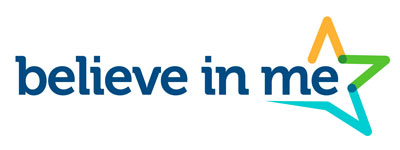Why Collaboration is Key in Supporting Marginalized Youth: Uniting for a Brighter Future
Publish Date: August 8, 2025 0:00
Ever noticed how some of the best solutions come when unlikely allies join forces? When it comes to supporting marginalized youth, collaboration is not just a buzzword—it’s a lifeline. In a world where nonprofits, community organizations, and donors often work in silos, forming cross-sector partnerships can be the catalyst that drives meaningful change. Read on as we unravel the power of collaboration for youth support and see how nonprofit collaboration is opening new pathways for growth and opportunity.
In today’s piece, we dive deep into why collaboration is essential for building robust support systems for marginalized youth. What makes partnerships between community organizations, nonprofits, and donors so effective? And how does the visionary work of organizations like Believe in Me play into this paradigm? After a quick peek at Google’s “People also ask” section, we found that top queries include: “Why is collaboration important in supporting marginalized youth?”, “How do cross-sector partnerships benefit youth programs?”, and “What role do nonprofits play in youth support?” Each question is answered as we explore research-driven examples and real-life success stories.
Prepare yourself for an engaging ride, rich in insights, examples, and actionable advice tailored for nonprofit leaders, community organizations, and donors who are willing to shake up the status quo and work together toward empowering our future generations.
Overview: How Collaboration Empowers Marginalized Youth
When communities rally together, every young person reaps the benefits. Collaboration for youth support means leveraging the unique expertise of various sectors to create robust programs that meet the diverse needs of marginalized youth. By pooling resources, sharing knowledge, and aligning goals, cross-sector partnerships can provide comprehensive support ranging from educational enrichment to mental health resources. This united approach not only offers immediate relief but builds resilient systems that foster growth and opportunity over the long term.
A recurring question from our research is, “Why is collaboration important in supporting marginalized youth?” The answer is simple: no single organization has all the answers. Only through effective nonprofit collaboration can we bridge service gaps, maximize resource allocation, and ensure that every young person gets the help they need to succeed.
Key Questions Answered
- Why is collaboration important in supporting marginalized youth?
Collaboration ensures that various services and support systems work hand-in-hand, reducing redundancy and creating seamless support for youth. - How do cross-sector partnerships benefit youth programs?
These partnerships harness the strengths of multiple sectors, offering a diverse range of resources and perspectives that enrich youth programs. - What role do nonprofits play in youth support?
Nonprofits serve as the backbone, often acting as the trusted intermediaries between grassroots communities and larger institutional partners.
Real-World Success Stories: Case Studies of Collaborative Youth Programs
Numbers and theories aside, nothing proves the power of collaboration like real-life success stories. Let’s explore two standout case studies demonstrating how collective efforts have transformed lives.
Case Study 1: Believe in Me’s Partnership Approach
At the forefront of cross-sector partnerships is Believe in Me. Their innovative strategy brings together educators, nonprofit organizations, and community donors to build resilient support networks for marginalized youth. By integrating mentorship, career guidance, and social support services, Believe in Me has set a gold standard for nonprofit collaboration.
One shining example is the collaboration with local schools and counseling centers that enabled tailored interventions for at-risk youth. The program not only provided educational resources but also focused on mental health support, combining funding with expertise from mental health professionals. This multifaceted approach has led to a noticeable improvement in youth self-confidence and academic performance.
Case Study 2: The Community Champions Alliance
Another standout example is the Community Champions Alliance, a joint initiative supported by multiple nonprofit organizations and local businesses. This alliance focuses on providing after-school programs, job training, and leadership development workshops for marginalized youth. By inviting donors to participate actively in planning and execution, the program has built trust and expanded its resource pool exponentially.
The success of the alliance illustrates how collaboration can bridge the gaps between different sectors and drive sustainable change. Youth participants have reported enhanced social skills, better academic engagement, and increased career readiness—effects that ripple out to benefit the broader community.
The Role of Collaboration in the Community
Collaboration for youth support does far more than simply provide services. It acts as a bridge connecting various parts of the community—educators, legislative bodies, nonprofit organizations, donors, and local businesses—to build a network of resources and opportunities. This inclusive approach is crucial when addressing complex societal challenges that marginalized youth face, including systemic inequities and resource shortages.
Moreover, research from sources like the Stanford Social Innovation Review highlights that collaborative initiatives tend to be more innovative and resilient. Cross-sector partnerships can often mobilize resources faster and more effectively than isolated efforts. Similarly, Philanthropy News Digest reports that nonprofit collaboration leads to improved outcomes in both service delivery and impact metrics (Stanford Social Innovation Review, 2023; Philanthropy News Digest, 2023).
In practical terms, this means that a collaborative approach not only benefits the individuals directly served but also strengthens the overall fabric of the community. It creates a model where any disruption or crisis is met collectively, ensuring that youth always have a reliable support system.
Actionable Steps: How You Can Get Involved
Ready to jump in and champion the cause of supporting marginalized youth? Whether you’re a nonprofit leader, part of a community organization, or a donor eager to make a difference, there are several actionable ways to get involved in fostering collaboration for youth support.
- Build Bridges via Partnership Meetings: Schedule regular meetings that bring together leaders from different sectors. These meetings can be used to identify common challenges, share success stories, and brainstorm innovative solutions. Consider inviting partners like Believe in Me to share their successful models.
- Establish Joint Funding Initiatives: Pool resources with other organizations and secure funding or sponsorship opportunities. Work together to write comprehensive grant proposals that highlight the power of a united community approach to youth support.
- Organize Community Workshops and Webinars: Share insights on successful nonprofit collaboration and cross-sector partnership models. Invite guest speakers who have first-hand experience with impactful youth programs. These sessions can serve as a platform for idea exchange and capacity building.
- Volunteer Your Expertise: Whether it’s legal advice, fundraising expertise, or social media skills, every contribution counts. By volunteering, you help create a collaborative network that leverages diverse skills for maximum impact.
- Promote Success Stories: Actively share the accomplishments of collaborative efforts on social media, in community newsletters, and through local media channels. Amplifying these stories not only inspires others to engage but also builds credibility and attracts further partners.
These steps don’t just prepare the ground for immediate help; they build a community that’s robust, resilient, and ready to support the next generation. With sustained effort and genuine collaboration, we can overcome the traditional barriers that have held marginalized youth back for far too long.
Conclusion: Uniting to Empower Marginalized Youth
In an era of resource constraints and mounting social challenges, collaboration stands out as a beacon of hope. By joining hands across sectors, we can create a support network for marginalized youth that is as dynamic as it is effective. When nonprofit collaboration and cross-sector partnerships come together, they redefine what’s possible—transforming visions into actions and challenges into triumphs.
Organizations like Believe in Me are leading by example, demonstrating that when diverse strengths unite, the outcome is far greater than the sum of its parts. It’s time for nonprofit leaders, community organizations, and donors to initiate partnerships that drive meaningful change. Your proactive involvement could be the spark that ignites a brighter future for our youth.
Let’s break down silos, pool our resources, and collaborate for youth support. After all, empowering our marginalized youth today means building the resilient, unified communities of tomorrow.
Citations: Stanford Social Innovation Review, 2023; Philanthropy News Digest, 2023.
Get to know more about Believe in Me and Help a Kid Today
References
Stanford Social Innovation Review, 2023; Philanthropy News Digest, 2023.






